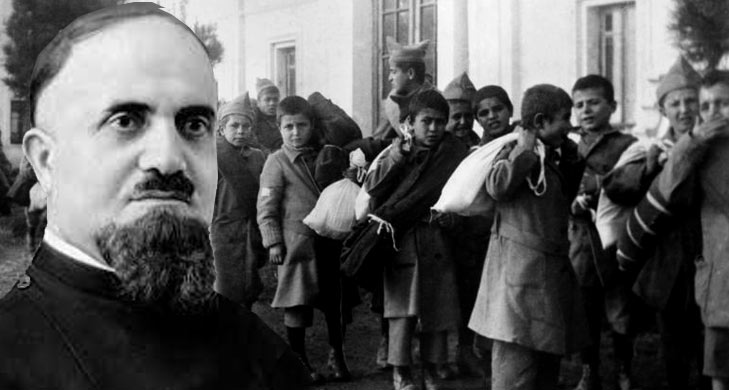The Armenian genocide took place during the First World War. It was the systematic mass murder of nearly a million ethnic Armenians in the Ottoman Empire. This horrific incident was spearheaded by the ruling Committee of Union and Progress. It was characterized by mass executions, death marches to the Syrian Desert, and forced conversions to the Islamic faith.
The Armenians belonged to the Christian faith and lived as second-class citizens under the Islamic Ottoman rule. Their population was largely concentrated in eastern Anatolia. The Armenian genocide destroyed more than two millennia of Armenian civilization in the eastern part of Anatolia. Nearly 1.5 million Armenians died in this massacre. Here are some of the few who survived:
1. Aris Alexanian
Born as Aris Luke Alexanian, he was a noted world traveller and a prominent Armenian Canadian businessman. He was born in the Turkish town of Agin during Ottoman rule. Owing to the untimely death of his parents, he was orphaned at an early age.
In order to escape the Armenian genocide, he went into hiding for 6 months in the Anatolia region. Although he was shot and wounded during this period, he managed to escape. He arrived in New York City in 1920 and moved to Canada in 1921.
2. Grigoris Balakian
Besides being a survivor of the Armenian genocide, he was a bishop of the Armenian Apostolic Church. He was born in Tokat under the Ottoman Empire and graduated from the Sanasarian College. He studied architecture for two years in Germany and obtained a degree in civil engineering. Later, he was ordained under the monastic name, Grigoris Balakian, and became a celibate priest.
He was among the prominent Armenians of Constantinople, who were arrested and deported in 1915. Luckily, he managed to escape the genocide by fleeing to a construction site on the Bagdad railway. He was helped by German engineers and finally succeeded in escaping to Paris from Constantinople.
3. Pailadzo Captanian
She was an author who survived the Armenian genocide of 1915. Pailadzo is also credited for being an inspiration for the creation of Rice-A-Roni. It is based on her own recipe of Armenian pilaf. During the genocide, she was forced to march through the Syrian desert to Aleppo while pregnant. Before the deportations, she had entrusted her two sons to a Greek family.
In 1919, she was reunited with her sons and they moved to the United States. She worked as a seamstress and sewed draperies for the home of President Franklin D. Roosevelt in New York. She published the Armenian original of her memoirs in 1922.
4. Arshile Gorky
He has been hailed as one of the most powerful painters of America from the 20th century. Arshile Gorky was born as Vostanik Manoug Adoian in the village of Khorgom under the Ottoman Empire. During the Armenian genocide of 1915, he escaped into a Russian-controlled territory with his mother and three sisters.
His mother died of starvation in Yerevan in the aftermath of the genocide in 1919. He claimed to be a Georgian noble in the process of reinventing his identity and changing his name. Gorky reunited with his father after arriving in America in 1920, but they never grew close.

